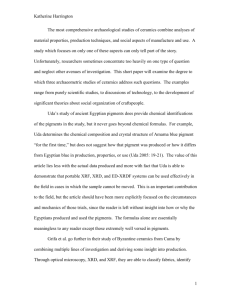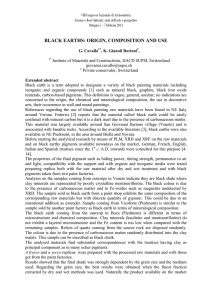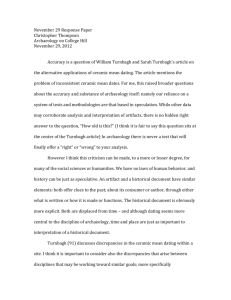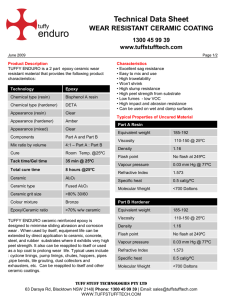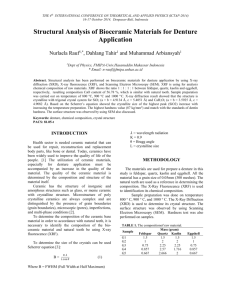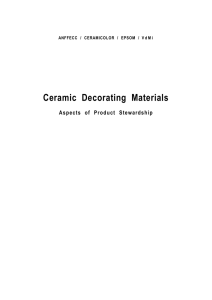CriticalResponse1
advertisement
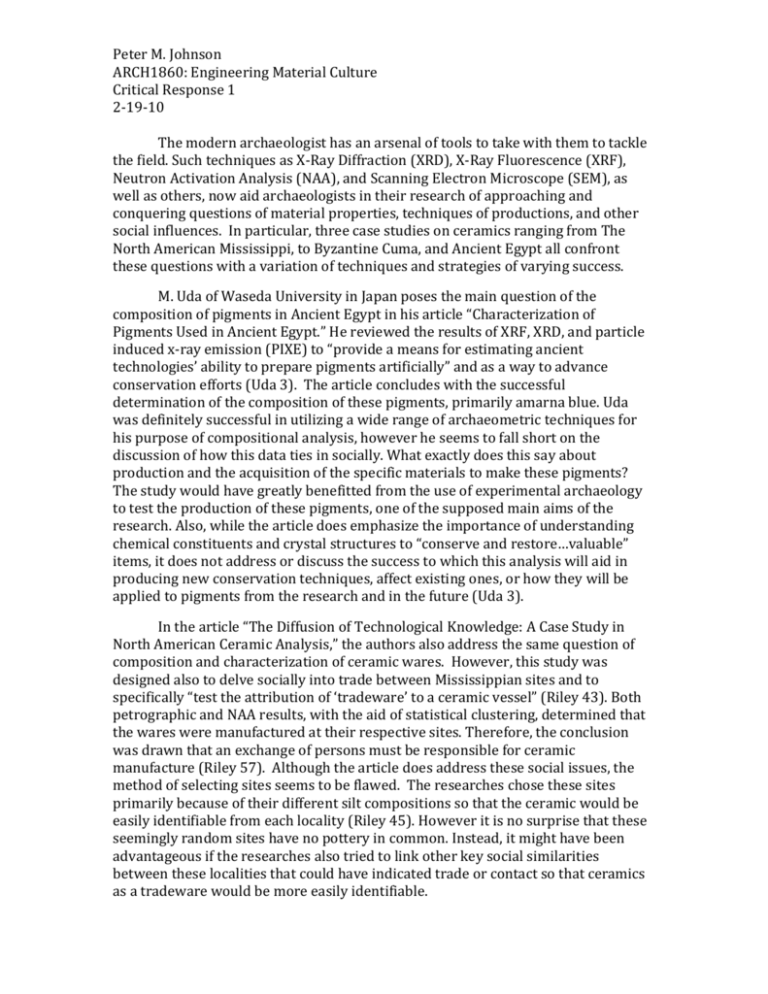
Peter M. Johnson ARCH1860: Engineering Material Culture Critical Response 1 2-19-10 The modern archaeologist has an arsenal of tools to take with them to tackle the field. Such techniques as X-Ray Diffraction (XRD), X-Ray Fluorescence (XRF), Neutron Activation Analysis (NAA), and Scanning Electron Microscope (SEM), as well as others, now aid archaeologists in their research of approaching and conquering questions of material properties, techniques of productions, and other social influences. In particular, three case studies on ceramics ranging from The North American Mississippi, to Byzantine Cuma, and Ancient Egypt all confront these questions with a variation of techniques and strategies of varying success. M. Uda of Waseda University in Japan poses the main question of the composition of pigments in Ancient Egypt in his article “Characterization of Pigments Used in Ancient Egypt.” He reviewed the results of XRF, XRD, and particle induced x-ray emission (PIXE) to “provide a means for estimating ancient technologies’ ability to prepare pigments artificially” and as a way to advance conservation efforts (Uda 3). The article concludes with the successful determination of the composition of these pigments, primarily amarna blue. Uda was definitely successful in utilizing a wide range of archaeometric techniques for his purpose of compositional analysis, however he seems to fall short on the discussion of how this data ties in socially. What exactly does this say about production and the acquisition of the specific materials to make these pigments? The study would have greatly benefitted from the use of experimental archaeology to test the production of these pigments, one of the supposed main aims of the research. Also, while the article does emphasize the importance of understanding chemical constituents and crystal structures to “conserve and restore…valuable” items, it does not address or discuss the success to which this analysis will aid in producing new conservation techniques, affect existing ones, or how they will be applied to pigments from the research and in the future (Uda 3). In the article “The Diffusion of Technological Knowledge: A Case Study in North American Ceramic Analysis,” the authors also address the same question of composition and characterization of ceramic wares. However, this study was designed also to delve socially into trade between Mississippian sites and to specifically “test the attribution of ‘tradeware’ to a ceramic vessel” (Riley 43). Both petrographic and NAA results, with the aid of statistical clustering, determined that the wares were manufactured at their respective sites. Therefore, the conclusion was drawn that an exchange of persons must be responsible for ceramic manufacture (Riley 57). Although the article does address these social issues, the method of selecting sites seems to be flawed. The researches chose these sites primarily because of their different silt compositions so that the ceramic would be easily identifiable from each locality (Riley 45). However it is no surprise that these seemingly random sites have no pottery in common. Instead, it might have been advantageous if the researches also tried to link other key social similarities between these localities that could have indicated trade or contact so that ceramics as a tradeware would be more easily identifiable. Peter M. Johnson ARCH1860: Engineering Material Culture Critical Response 1 2-19-10 Lastly, the article “Byzantine Ceramic Production from Cuma,” proposes its main aims of research to be to characterize the production of these two wares, table and cooking, from a “technical point of view and to evaluate the mineralogical and textual features of the pastes, the type of raw materials, the firing temperatures and the relation of these to the ultimate use of the pottery” (Grifa 76). The authors employ optical microscopy, XRD, XRF, and SEM techniques for these goals. The study did do an excellent job in outlining the results from each technique, how they fit in with the aim, and what the results are actually saying about the material. In one case, when examining the materials with XRD, the authors not only present the composition in scientific table terms, but also speak to which trends seem to fit tableware and to cooking wares respectively, giving a brief explanation for the difference. When calcite appears in some specimens, for example, it is suggested that the carbonate arose from a post-burial origin (Grifa 80-85). Even though minor, these details act as an ample link between scientific fact and numbers to social discussion and explanation. This organization and clarity both enhances the article but also fortifies the research from multiple aspects of science and archaeology alike. These three case studies all represent very different conditions, goals of research, and data. However, the similar techniques all tie these reports together and demonstrate the varying levels of efficacy in not only interpreting these results, but also developing research which complements them nicely. Peter M. Johnson ARCH1860: Engineering Material Culture Critical Response 1 2-19-10 Works Cited Grifa, C. et al 2009. Byzantine Ceramic Production from Cuma. Archaeometry 51,1. Riley, T. et al. 1994. The Diffusion of Technological Knowledge: a case study in North American Ceramic Analysis. In Wisseman, pgs. 41-58. Uda, M. 2005 Characterization of Pigments Used in Ancient Egypt. In M. Uda et. al (eds), X-rays for Archaeology, Springer: Dordrecht, pgs. 3-26.
